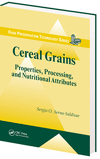Innovating with Almonds
Trend-forward forms and textures keep almonds in top spot for manufacturer and consumer demand

For the sixteenth consecutive year, almonds are the top nut in global new product development according to Global New Products data from Innova Market Insights, having been first recognized as the number one nut globally in 2006. With more forms than any other tree nut, almonds' versatile taste, texture and health claim benefits align to consumers’ ever-changing tastes, lifestyles and preferences.
This year’s Global New Products Report revealed that more than 12,000 new almond products were introduced in 2021, making up 40% of total nut introductions. Almonds are the number one nut in four of the top six1 global food introduction categories: bakery, bars, dairy and cereals. Of note, bakery’s growth at 15% is highest out of all introductions across global food, nut and almond introductions.
The report also revealed introductions with almonds led to a higher likelihood of on-pack health claims with over 1 in 5 products with almonds featuring the top health label claim, “gluten-free," specifically. The remaining four leading health label claims for products with almonds were “no additives/preservatives,” “high source of fiber,” “organic,” and “high source of protein.” Almonds remain the number one nut by a large margin for global introductions with label claims for “plant-based,” “vegan” and “vegetarian,” as plant-based food products continue to dominate consumer desires for health and lifestyle needs.
“We’re continually impressed to see manufacturers across the globe innovating with almonds to stay on top of consumer demands, trends and preferences coming out of the pandemic,” said Harbinder Maan, Associate Director, Trade Marketing and Stewardship at the Almond Board of California. “The versatility of almonds as an ingredient is truly unique, and we continue to see new innovations across product categories that really push the envelope.”
The Global New Products Report also found that almonds are not only the number one nut in North America but also in Europe and Asia-Pacific. Europe is leading almond introductions for all top almond relevant categories except for cereals, where Asia-Pacific is the leading region. Globally, the top six almond relevant categories account for 82% of total almond introductions, while these categories account for only 43% of total food introductions.
Confectionery is the leading category for almond product introductions in Europe and the Middle East & Africa, while bars is the leading category in North America, and bakery is the leading category in Asia-Pacific with a narrow margin over snacks. When it comes to regions where almond product introductions are growing fastest, the Middle East & Africa lead the charge at 15%, followed by Latin America at eight%, and Asia-Pacific at three%.
The success of almonds as a key ingredient across product categories can partially be attributed to their texture versatility. The creaminess and contrasting smoothness of almond butter is a natural fit for spreads, which grew globally at 12%, whereas sliced or chopped almonds add crunch to a growing desserts and ice cream category. Most notably, to satisfy an increased demand for gluten-free and healthy indulgence options, almond flour is often utilized as a key ingredient in the ready meals and side dish category, particularly in products like frozen pizzas.
“Coming out of two unprecedented years of pandemic-related change, it’s encouraging to see consumer expectations shifting towards a demand for a healthier lifestyle both in what and how they choose to consume,” said Lu Ann Williams, Global Insights Director at Innova Market Insights. “It’s no surprise that almonds have maintained their spot as number one for 16 years and counting, with the dynamic and various texture, flavor and health label claims they satisfy.”
Almonds are a nutrient-rich and heart-healthy ingredient. When compared ounce for ounce, almonds are the tree nut highest in vitamin E and riboflavin2, and a one-ounce serving of almonds provides six grams of protein, four grams of fiber, 13g of unsaturated fat and only 1g of saturated fat3.
References:
Innova Market Insights, Global New Products Introductions Report, 2021. May 2022.
1 The six key categories for almonds are confectionery (22%), bakery (19%), snacks (19%), bars (10%), cereals (9%), and dairy (7%), and account for 82% of total almond introductions.
2 Compared to Brazil nuts, hazelnuts, pecans, pine nuts, walnuts, cashews, macadamias and pistachios.
3 Good news about almonds and heart health. Scientific evidence suggests, but does not prove, that eating 1.5oz of most nuts, such as almonds, as part of a diet low in saturated fat and cholesterol may reduce the risk of heart disease. One serving of almonds (28g) has 13g of unsaturated fat and only 1g of saturated fat.
Looking for a reprint of this article?
From high-res PDFs to custom plaques, order your copy today!






